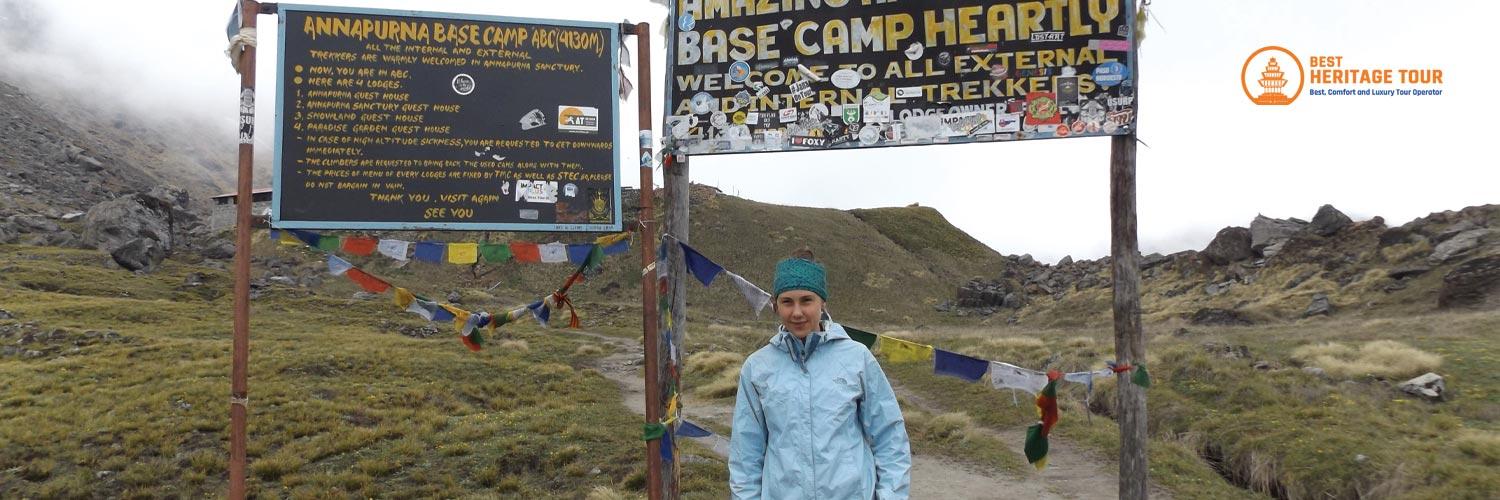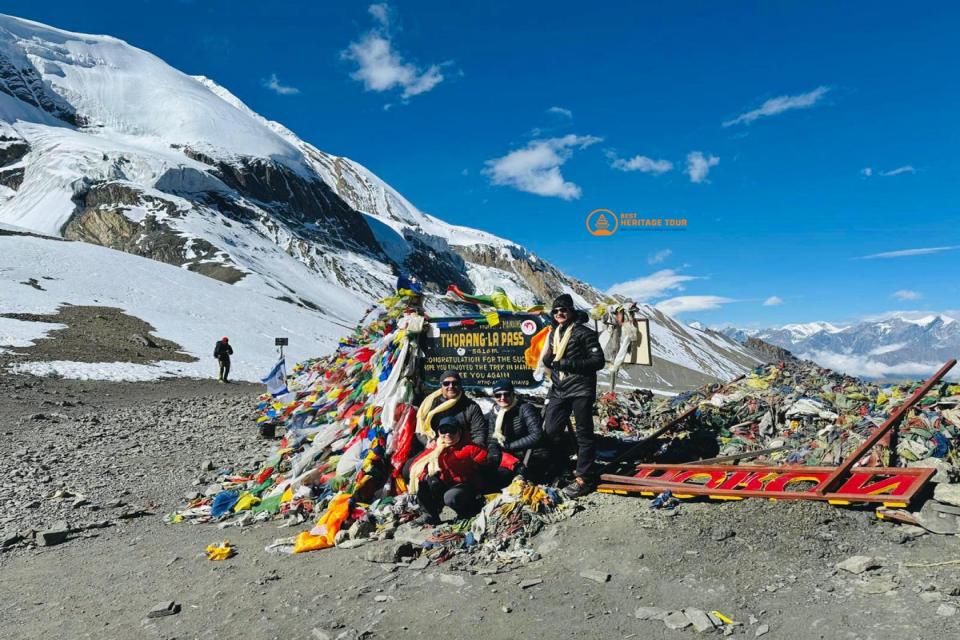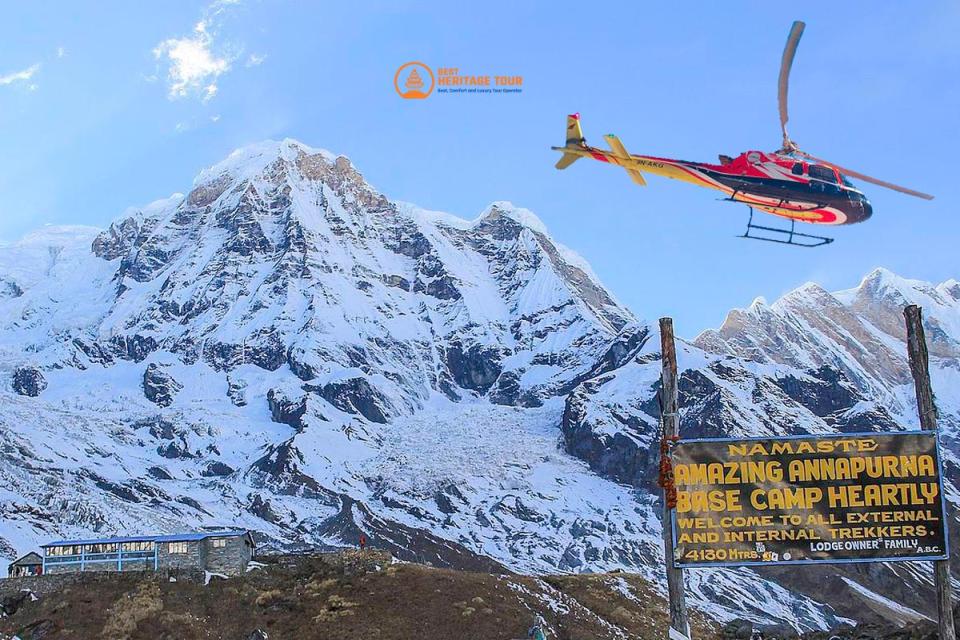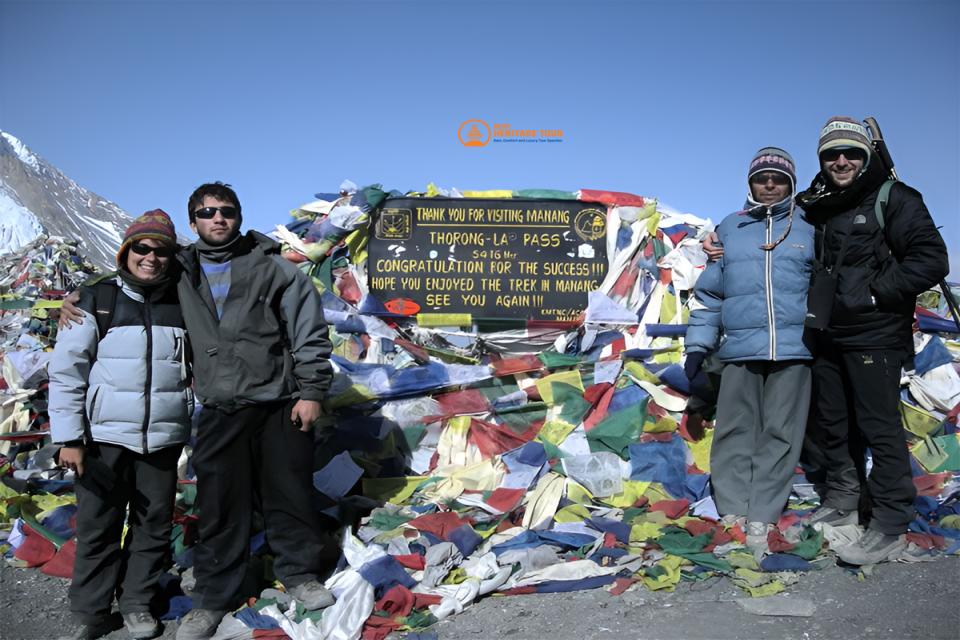The Annapurna Ranges in Nepal are a treasure trove of towering mountains, with some of the most iconic peaks in the world. As part of the larger Himalayan Mountain Range, the Annapurna region is home to some of the highest peaks, and each of them has a unique and majestic presence. From Annapurna I, the 10th highest mountain in the world, to the lesser-known but equally breathtaking peaks like Annapurna IV, the Annapurna Ranges are a true testament to the raw beauty and power of nature.
Let’s explore these stunning mountains that form the heart of the Annapurna Range.
1. Annapurna I (8,091 meters / 26,545 feet)
Annapurna I is the 10th highest mountain in the world and is one of the most famous peaks in Nepal. It stands as the centerpiece of the entire Annapurna massif, and its towering peak can be seen from various vantage points throughout the region.
The mountain was first summited in 1950 by a French expedition, making it one of the first 8,000-meter peaks to be climbed. However, it is also known for its high fatality rate, making it a challenging and dangerous peak to climb. Despite this, Annapurna I remains a coveted prize for mountaineers from around the world, offering an unparalleled experience for those who succeed in reaching its summit.
The surrounding Annapurna Sanctuary offers trekkers incredible views of the peak, and it is a prime destination for those aiming to see Annapurna I up close from Annapurna Base Camp.
2. Annapurna II (7,937 meters / 26,040 feet)
Sitting to the east of Annapurna I, Annapurna II is the 16th highest mountain in the world. This peak is a part of the Annapurna Massif and was first summited in 1960 by a French expedition. Annapurna II is less frequently climbed than Annapurna I, but it remains an impressive and formidable peak.
Known for its steep slopes and technical difficulty, Annapurna II presents a challenge for even the most experienced climbers. While Annapurna I often draws more attention, Annapurna II’s towering beauty and rugged terrain make it a breathtaking sight from the surrounding valleys and trekking routes.
3. Annapurna III (7,555 meters / 24,786 feet)
Annapurna III, also known as Kanguru, is located to the west of Annapurna II. Though it stands a bit lower in height, this peak is still a significant presence in the Annapurna massif. Annapurna III was first summited in 1961, and while not as famous as its higher neighbors, it is still a remarkable and formidable peak.
The mountain is often seen as one of the more technical climbs in the Annapurna region, with steep faces and challenging ridgelines. However, it offers awe-inspiring views of the surrounding peaks, including Annapurna I and Machapuchare. The area around Annapurna III is less frequented by trekkers, making it an ideal spot for those looking for a more remote experience.
4. Annapurna IV (7,525 meters / 24,688 feet)
Annapurna IV, located to the northeast of Annapurna III, is another impressive peak in the Annapurna massif. Standing just a little shorter than Annapurna III, this mountain is also less frequently climbed. However, it is still a significant and challenging peak for mountaineers seeking an adventure in the Annapurna range.
The first successful summit of Annapurna IV was achieved in 1959, and the peak remains one of the more technically demanding climbs in the region. While it is not often included in trekking itineraries, its prominence in the landscape adds to the beauty and allure of the Annapurna massif.
5. Machapuchare (6,993 meters / 22,943 feet)- The Fish Tail Peak
While Machapuchare (meaning Fish Tail) is not part of the Annapurna massif's officially designated peaks, it stands as one of the most iconic mountains in the region. Often seen in photographs alongside Annapurna I, Machapuchare’s distinct twin peaks resemble the tail of a fish and have earned it the name Fish Tail Peak.
What makes Machapuchare even more special is the fact that it remains unclimbed. The mountain is considered sacred by the local Gurung people, and its summit has been off-limits to climbers since it was first prohibited by the government in the 1950s. Its imposing shape and serene beauty make it one of the most photographed mountains in Nepal.
6. Other Peaks in the Annapurna Range
In addition to the four major Annapurna peaks, the Annapurna range is home to several other notable peaks that are part of the Annapurna massif, including:
-
Annapurna South (7,219 meters / 23,684 feet):
Situated just to the south of Annapurna I, this peak is a popular climb and offers great views of the surrounding mountains.
-
Himalchuli (7,893 meters / 25,889 feet):
Located on the northern side of the Annapurna range, this mountain is less frequented by climbers but provides stunning views from the surrounding region.
-
Gangapurna (7,455 meters / 24,457 feet):
This is another striking peak located near Annapurna, and it forms part of the Annapurna Sanctuary trek.
Conclusion: A Himalayan Wonder
The Annapurna Ranges are one of the most spectacular mountain ranges in Nepal, offering some of the highest and most awe-inspiring peaks in the world. Whether you are standing at the base of Annapurna I or gazing at the majestic Machapuchare, the Annapurna massif offers breathtaking views, challenging climbs, and unforgettable experiences.
The Annapurna region is a must-visit for any serious mountaineer or trekking enthusiast looking to explore the Himalayas. Whether you're trekking through the valleys, climbing to new heights, or simply soaking in the majesty of these iconic mountains, the Annapurnas offer something for everyone.
If you’re planning to explore the Annapurna Ranges and want a seamless and memorable experience, consider booking your trip with Best Heritage Tour. Our expert guides and comprehensive itineraries ensure a safe and unforgettable adventure in the heart of the Annapurna region.
Contact Best Heritage Tour Company
Visit Best Heritage Tour Pvt.Ltd. official website to gather information about BHT services.
Look for contact details:
Phone number/Viber /What’s App: +9779851149197 / +9779810043046
Email: bestheritagetour@gmail.com/ info@bestheritagetour.com to get in touch with them directly.
Author: Best Heritage Tour
Date: 14th May, 2025





